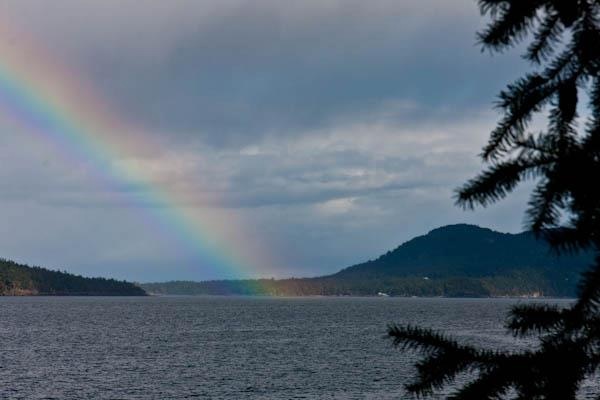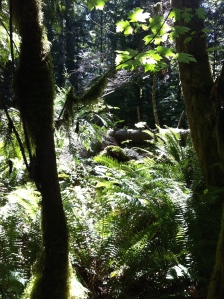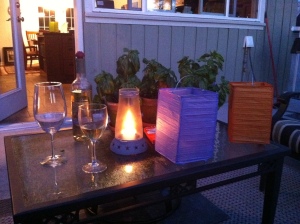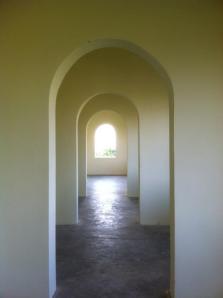52 Weeks Being Now: Week Forty: Silent Knowledge.
Stopping to Listen: Every so often we get caught up in the inertia of our lives and in the words and actions that precipitate what we believe to be the “truth”. We are so busy trying to figure out what the truth means, that we lose the essential point of why we are trying to learn it in the first place. We want to experience joy. We want to experience love. We believe that the absolute truth will allow us some sense of security in knowing our goodness and that of those around us. Then, and only then, can we experience true joy and love. However, the truth is only a story that we tell ourselves, or that we allow others to interpret of us:
“I am only one half of the message; you are the other half. I am responsible for what I say, but I am not responsible for what you understand. You are responsible for what you understand; you are responsible for whatever you do with what you hear in your head, because you are the one who gives the meaning to every word that you hear” (Ruiz, 2010, p. 104).
Usually, we listen to the words of those we hope are telling us the truth. We watch their actions. We try to align their words and actions so as to have them make testaments of what we need to believe to be true. However, in the end, it is all a story. It is a perspective, and what truly matters is what is beneath the story. “The truth is silent. It’s something you you just know; it’s something that you can feel without words and it’s called silent knowledge” (Ruiz, 2010, p. 110). I refer to it as intuition.
Quiet Communication: Intuition is sometimes fed by little clues. If we really listen, we hear someone’s character by subtler things found in between the words and actions. These sometimes imperceptible details become magnificent, in particular when we are at odds with ourselves and each other. Compassionate details matter most in moments of difficulty. For example: the sound of the patient breath; a loving look; our tears wiped; a patient tone; loving eye-contact; arms open; whispering tones of gratitude; no rushing; quiet rest; the benefit of the doubt; a hug; a loving presence; strong persistence; a belligerent belief in our internal goodness despite the proof in the moment of something less; a hummed melody; pure stillness; compassionate space and intimacy; staying awake; a caress; a touch on furrowed brow; a knowing look; and never ever feeling ignored. All are quiet forms of love that are somewhere between or beyond words and action.
When we show this quiet love, we believe in ourselves more. This silent belief in our own goodness are the roots that we grow into the ground around us. These are the roots of disciplined empathy which I like to call integrity. These roots give ourselves and people confidence in us, even when the wind blows.
Although you are a talisman protecting a treasure,
you are also the mine.
Open your hidden eyes
and come to the root of the root of your Self.
(Rumi, Root of the Root)
When we are quietly strong this way, we and the people around us always know that we only tremble a bit in the storms, or when we are tired. Regardless, we remain standing, and continue to grow upward into the sunlight. There is a tacet understanding that unless we are forcibly chopped down, or burned, our goodness is intrinsic and constant. We do not tire from being this way because it is a good way to be, but it takes effort. We see no limitations to it because we understand that “the mind that perceives the limitation is the limitation” (Buddha).
If we are really listening, we do not question the internal goodness of ourselves and others because it is just there, sometimes covered up by confusing words, and complicated actions and the assumptions that we draw from both. However, if we are really listening, we hear each other in deeper timbres. We know intuitively of the pain and the love that resides deeper inside of us and those around us. We ask different questions. We appreciate the power of the pregnant pause when we respond, not react. We step forward into the wind, not backwards. We sing inwards, rather than shout outwards. We pull forwards rather than push away.
Don’t go away, come near.
Don’t be faithless, be faithful.
Find the antidote in the venom.
Come to the root of the root of your Self.
(Rumi, Root of the Root)
In other words, when we are rooted, we stay. We stay present. We stay connected. This staying is the silent knowledge of our spiritual love as compassionate people in all of our complexities.
“Human beings are millions of things in one day.”
― Nick Hornby, A Long Way Down





